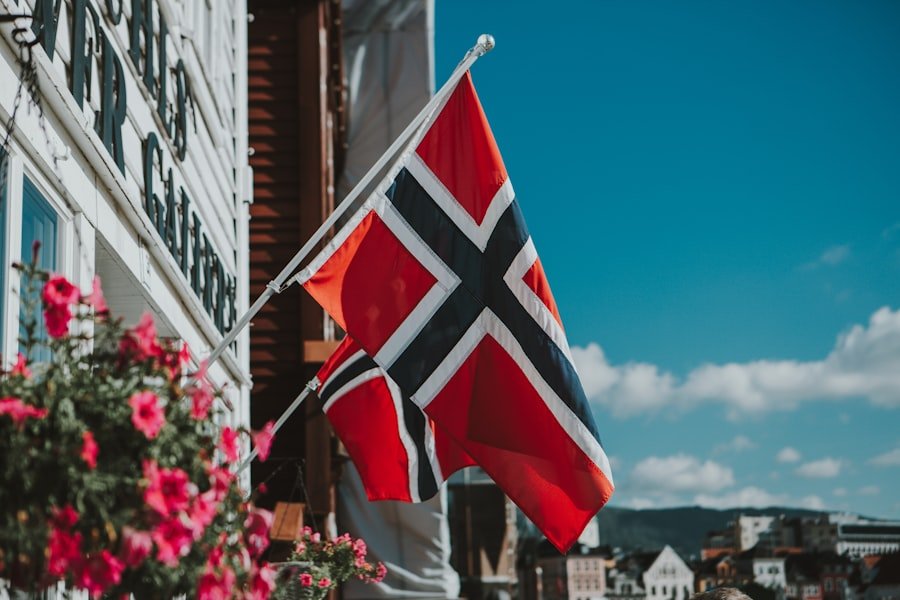In Norway, the term ‘Kommune’ refers to the local government entities that play a pivotal role in the administration and governance of various public services. Each Kommune operates autonomously, managing a range of responsibilities that include education, healthcare, and infrastructure. The structure of the Kommune is designed to ensure that local needs are met effectively, allowing for tailored responses to the unique challenges faced by different communities.
With a strong emphasis on decentralisation, the Kommune system empowers local authorities to make decisions that directly impact their residents, fostering a sense of ownership and accountability. The significance of the Kommune extends beyond everyday governance; it is also integral to Norway’s emergency preparedness framework. Given the country’s diverse geography and climate, which can lead to various natural disasters such as floods, landslides, and severe weather conditions, the role of the Kommune in emergency management is crucial.
This article will delve into the legal frameworks, responsibilities, and collaborative efforts that underpin the Kommune’s role in ensuring public safety and resilience in times of crisis. Feeling overwhelmed by your move to Norway? Get personalized expert advice by booking a one-on-one session with our relocation specialists.
Summary
- The Kommune in Norway plays a crucial role in emergency preparedness and response.
- The legal framework for emergency preparedness in Norway provides clear guidelines for the Kommune’s responsibilities.
- The Kommune is responsible for coordinating emergency preparedness efforts and ensuring effective collaboration with other authorities and organizations.
- Risk assessment and planning are key components of the Kommune’s emergency preparedness efforts.
- Communication and information sharing are essential for the Kommune to effectively respond to emergencies and keep the public informed.
Legal Framework for Emergency Preparedness in Norway
Norway’s approach to emergency preparedness is grounded in a robust legal framework that outlines the responsibilities and powers of various authorities, including the Kommune. The primary legislation governing emergency preparedness is the Civil Protection Act, which mandates that all levels of government must work together to ensure effective disaster management. This act establishes a comprehensive system for risk assessment, planning, and response, ensuring that local authorities are equipped to handle emergencies efficiently.
In addition to the Civil Protection Act, several other regulations and guidelines complement this framework. The Norwegian Directorate for Civil Protection (DSB) plays a vital role in providing guidance and support to Kommunes in developing their emergency preparedness plans. This legal structure not only delineates the roles of different authorities but also emphasises the importance of collaboration and coordination among them.
By establishing clear legal obligations, Norway ensures that its Kommunes are prepared to respond effectively to emergencies while safeguarding public safety.
Responsibilities of the Kommune in Emergency Preparedness

The responsibilities of the Kommune in emergency preparedness are multifaceted and encompass various aspects of disaster management. One of the primary duties is to develop and maintain an emergency preparedness plan tailored to the specific risks faced by the community. This plan outlines procedures for responding to different types of emergencies, ensuring that local authorities can act swiftly and effectively when crises arise.
The Kommune is also responsible for conducting regular risk assessments to identify potential hazards and vulnerabilities within its jurisdiction. Moreover, the Kommune must ensure that its emergency preparedness efforts are well-resourced and supported by trained personnel. This includes establishing dedicated emergency response teams and ensuring that staff members are equipped with the necessary skills and knowledge to manage crises effectively.
Additionally, Kommunes are tasked with coordinating with other local agencies, such as healthcare providers and fire services, to create a cohesive response strategy that leverages the strengths of various organisations. By fulfilling these responsibilities, Kommunes play a critical role in safeguarding their communities against potential threats.
Collaboration with Other Authorities and Organizations
Collaboration is a cornerstone of effective emergency preparedness in Norway. The Kommune must work closely with regional and national authorities, as well as non-governmental organisations (NGOs) and community groups, to create a comprehensive approach to disaster management. This collaborative effort ensures that resources are shared, expertise is pooled, and communication channels are established, allowing for a more coordinated response during emergencies.
One notable example of collaboration is the partnership between Kommunes and the Norwegian Red Cross. This relationship enables local authorities to tap into the extensive volunteer network and resources provided by the Red Cross during crises. Furthermore, joint training exercises between Kommunes and other emergency services foster a spirit of teamwork and enhance overall preparedness.
By engaging with various stakeholders, Kommunes can build a resilient network that enhances their capacity to respond effectively to emergencies.
Risk Assessment and Planning
Risk assessment is a fundamental component of emergency preparedness within the Kommune framework. By systematically identifying potential hazards and evaluating their likelihood and impact, Kommunes can develop targeted strategies to mitigate risks. This process involves analysing historical data on disasters, consulting with experts, and engaging with community members to gain insights into local vulnerabilities.
Once risks have been assessed, Kommunes must translate this information into actionable plans. These plans should outline specific measures for prevention, response, recovery, and mitigation tailored to the unique characteristics of each community. For instance, a Kommune located in a flood-prone area may prioritise flood defence measures and evacuation protocols in its planning efforts.
By adopting a proactive approach to risk assessment and planning, Kommunes can significantly enhance their resilience against potential emergencies.
Communication and Information Sharing

Effective communication is vital during emergencies, as it ensures that accurate information reaches those who need it most. The Kommune plays a crucial role in disseminating information before, during, and after a crisis. This includes informing residents about potential risks, providing guidance on safety measures, and updating the public on response efforts as situations evolve.
To facilitate effective communication, Kommunes must establish clear channels for information sharing with both internal stakeholders—such as emergency services—and external partners like media outlets and community organisations. Social media platforms have become increasingly important tools for real-time communication during emergencies, allowing Kommunes to reach a wider audience quickly. By prioritising communication strategies within their emergency preparedness plans, Kommunes can foster trust within their communities and ensure that residents are well-informed during critical situations.
Training and Exercises
Training and exercises are essential components of emergency preparedness within the Kommune framework. Regular training sessions for emergency response teams ensure that personnel are familiar with protocols and procedures, enabling them to act decisively during crises. These training initiatives may include simulations of various disaster scenarios, allowing responders to practice their skills in a controlled environment.
Moreover, Kommunes often engage in joint exercises with other local agencies and organisations to enhance coordination and collaboration during emergencies. These exercises provide valuable opportunities for participants to identify gaps in their response plans and refine their strategies accordingly. By investing in training and exercises, Kommunes can build a culture of preparedness that empowers individuals and organisations to respond effectively when faced with real-life emergencies.
Resources and Equipment
The availability of resources and equipment is critical for effective emergency preparedness within the Kommune framework. Each Kommune must assess its specific needs based on identified risks and ensure that it has access to appropriate resources for disaster response. This may include emergency supplies such as food, water, medical kits, and communication equipment.
In addition to physical resources, financial investment is also necessary to maintain readiness. Kommunes must allocate budgets for purchasing equipment, conducting training sessions, and implementing preventive measures. Collaborating with regional or national authorities can also provide access to additional resources or funding opportunities that enhance local preparedness efforts.
By ensuring that adequate resources are available, Kommunes can significantly improve their capacity to respond effectively during emergencies.
Public Engagement and Education
Public engagement is an essential aspect of emergency preparedness within the Kommune framework. Educating residents about potential risks and safety measures empowers them to take proactive steps in safeguarding themselves during emergencies. Kommunes often organise community workshops, seminars, or informational campaigns aimed at raising awareness about disaster preparedness.
Engaging with residents also fosters a sense of community resilience. When individuals feel informed and involved in emergency preparedness efforts, they are more likely to participate actively in response initiatives during crises. Furthermore, involving community members in planning processes can provide valuable insights into local needs and concerns, ensuring that emergency plans are relevant and effective.
By prioritising public engagement and education, Kommunes can cultivate a culture of preparedness that strengthens community resilience.
Evaluation and Improvement
Continuous evaluation is vital for enhancing emergency preparedness within the Kommune framework. After each emergency event or training exercise, it is essential for Kommunes to conduct thorough assessments of their response efforts. This evaluation process involves analysing what worked well, identifying areas for improvement, and gathering feedback from all stakeholders involved.
Based on these evaluations, Kommunes can refine their emergency plans and strategies accordingly. This iterative process ensures that lessons learned from past experiences inform future preparedness efforts. Additionally, regular reviews of risk assessments allow Kommunes to adapt their plans in response to changing circumstances or emerging threats.
By committing to ongoing evaluation and improvement, Kommunes can enhance their resilience against future emergencies.
Case Studies of Kommune Emergency Preparedness Efforts
Examining case studies of successful Kommune emergency preparedness efforts provides valuable insights into best practices within Norway’s framework. One notable example is the Kommune of Bergen’s response to severe flooding events in recent years. Following significant rainfall that led to widespread flooding, Bergen’s Kommune implemented its emergency preparedness plan effectively by coordinating with local agencies and engaging community volunteers for assistance.
Another case study worth mentioning is Oslo’s proactive approach towards wildfire prevention in urban areas. Recognising the increasing risk posed by climate change, Oslo’s Kommune has invested in public education campaigns about fire safety while also enhancing its firefighting capabilities through training exercises with local fire departments. These case studies illustrate how effective planning, collaboration, public engagement, and continuous improvement contribute significantly towards enhancing emergency preparedness within Norwegian Kommunes.
In conclusion, the role of the Kommune in Norway’s emergency preparedness framework is multifaceted and essential for safeguarding communities against potential threats. Through robust legal frameworks, collaborative efforts with various stakeholders, comprehensive risk assessments, effective communication strategies, ongoing training initiatives, adequate resource allocation, public engagement efforts, continuous evaluation processes—and learning from successful case studies—Kommunes can build resilience within their communities while ensuring public safety during emergencies. For those interested in furthering their understanding of Norwegian culture or language as part of their engagement with local communities or authorities like the Kommune system mentioned above—consider enrolling in Norwegian courses at NLS Norwegian Language School located in Oslo!
With tailored programmes designed for all levels—from beginners seeking foundational skills through advanced learners aiming for fluency—NLS offers an excellent opportunity not only to learn but also immerse oneself into Norway’s rich cultural landscape while enhancing one’s ability to communicate effectively within this unique context!
Register for a Norwegian class at the NLS Norwegian Language School now!

